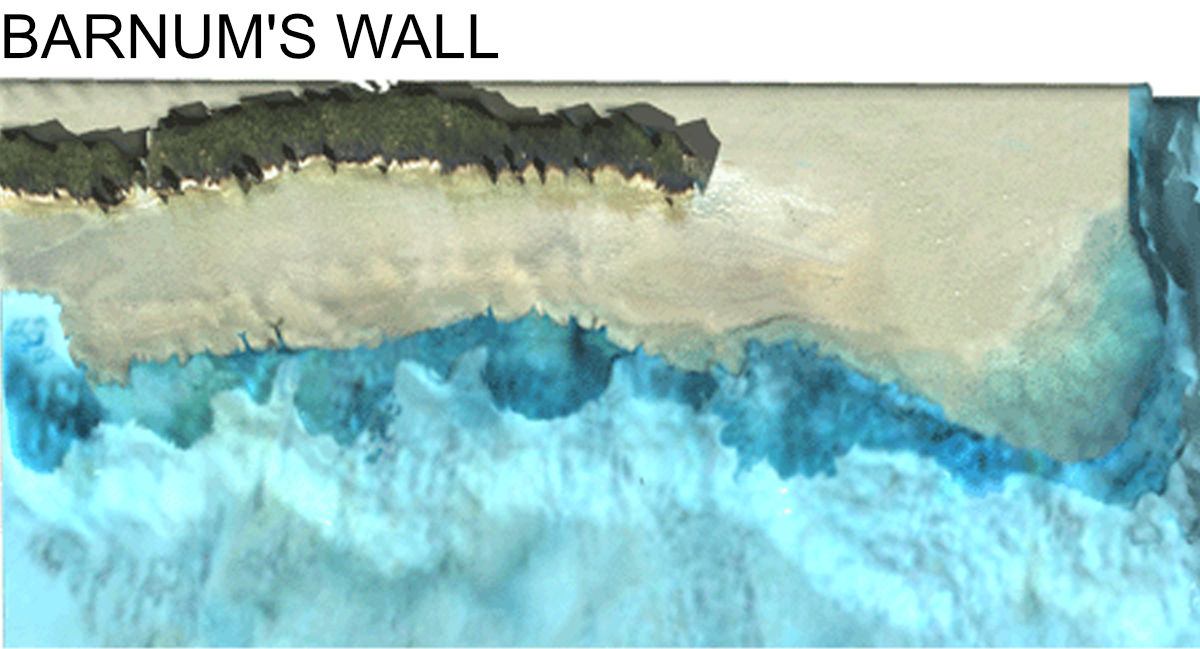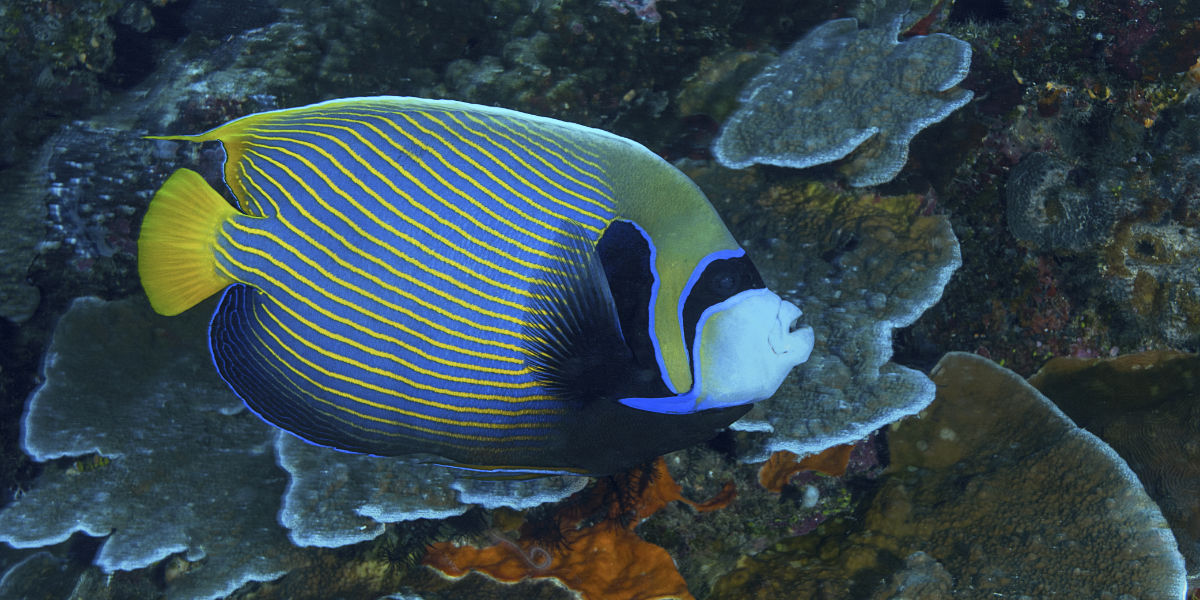Barnum's Wall
Location: Western reefs of Palau. Southwest of German Channel and northwest of Carp Island.
Distance from Koror: 24 Miles (39km) Southeast of Koror. 55 to 70 minutes by speedboat.
Level of Diving Experience: Novice.
Diving Depth Summary: Slope and Wall: 45 to 120 feet (15 to 40 meters). Plateau: 10 to 30 feet (3 to 9 meters).
Visibility: Incoming Tide: +120 to 90 feet (+40 to 30 meters). Outgoing tide: 90 to 30 feet (30 to 10 meters).
Currents: Moderate to none.
General Information: The reef is close to German Channel and offers relatively good protection in foul weather. This is also a good place for a second dive.

Currents: Like other similar dive sites in Palau including Ngdebus and Turtle Wall, it is often difficult to predict the direction of the current. The current here is not consistent and switches directions randomly. The dive guide will check the current and its direction. He will then decide where and in which direction to start the dive. (For more information regarding the tidal patterns in Palau, check the Blue Corner tide and current section).
Reef Formation: This sloping reef runs northeast to southwest parallel to Ngercheu Island. The reef shares a corner and a shallow plateau with Turtle Cove. The northeast section of the reef starts near the surface, moderately slopes down to 70 to 120 feet (23 to 40 meters) and then changes its formation to a rough sandy run off. Canyons and caverns cut through from the top of the reef. Before the reef reaches the corner it changes to a sheer wall. The reef wall drops down to 450 to 900 feet (150 to 300 meters). The plateau at the corner is 10 to 30 feet (3 to 10 meters) deep; it is decorated with small coral heads and rock canyons.
Marine life: Barnum's wall offers a large variety of colorful soft and hard corals. During descent look for White Tip Shark and Rays sleeping on the reef. The reef drop off and the corner are covered with carpets of yellow and green tubastrea corals. Large clouds of Pyramid Butterflyfish and Red tooth Triggerfish float in the current along the edges of the reef. When the conditions are right (strong incoming current and good visibility) schools of Gray Reef sharks, Barracudas, Snappers, Jacks, Wahoo and other predatory fish will be dancing all around you. If the current is not running, the top of the reef is a great place to find Scorpion Leaf Fish and other macro critters hiding among the corals.

Diving: Depends on the direction of the current, the dive boat will drop you either on the northeast slope or close to the corner. The northeast slope is pocketed with small caverns and deep canyons which are Great to explore. Look for sleeping sharks and rays on the sandy run offs at 70 to 90 feet (23 to 30 meters) Approaching the corner, the slope shapes into a sheer wall that drops several hundred feet/meters. If the current is running strong, move up to the edge of the plateau (20 to 30 feet/ 7 to 10 meters), pick a good spot, use your reef hook to hook-on to a rock. Enjoy the action! While off gassing, enjoy the shallow plateau (10 to15 feet/3 to 5 meters) on top of the reef. Barnum Wall can be one of the best dives in Palau.
Fascinating Facts: Even though this reef is sometimes wild and resembles a sea-life circus, it is not named after the famous Barnum and Bailey Circus. During WWII a young US Navy Lieutenant named Barnum was in charge of keeping Japanese boats from reaching the inner lagoons of Palau. Huge floating steel spheres connected by heavy chain was strung from Barnum's Wall across to Ngemelis Reef effectively blocking the area approaching German Channel. In 1986 Admiral Barnum returned to Palau and subsequently revealed the story behind the reef's name. Some of those steel spheres can still be found along the reef at Big Drop Off.